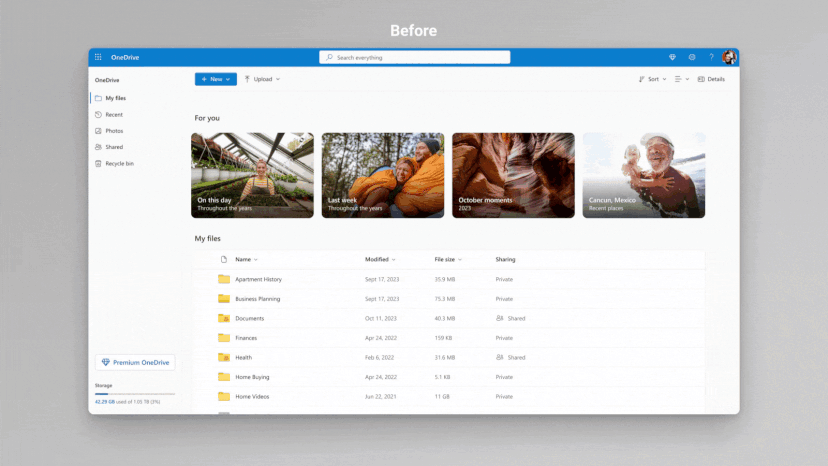Microsoft is ushering in a fresh look for its OneDrive cloud storage service, with a new design set to roll out to all OneDrive personal users by the end of February. This marks a significant step in the company’s commitment to providing an enhanced and user-friendly experience for its consumers.
The Fluent design refresh, initially revealed last year, is not just a cosmetic makeover but a holistic upgrade aimed at improving both visual appeal and functionality. Miceile Barrett, a Microsoft product manager, highlights the dual nature of this upgrade, stating, “It’s both a visual and functional upgrade designed to help you get to your files quickly and keep your content organized in multiple ways.” The revamped visual design streamlines the interface, reducing clutter and distractions, ultimately allowing users to focus on their content.

The new visual interface aligns closely with the aesthetics of Windows 11 and introduces changes consistent with Microsoft’s various Office apps. One notable addition is the introduction of a ‘people view,’ enabling users to locate files and documents by associating them with the faces of family or friends with whom they frequently share content. This innovative feature addresses the common challenge of remembering the exact file name in a long list, providing a more intuitive and personalized approach to file management.
Microsoft has not only simplified and modernized the main interface but also incorporated practical enhancements. The updated OneDrive UI includes new file filters, allowing users to organize their files based on Word, Excel, PowerPoint, or PDF formats. The ‘add new’ button has been revamped to include options for both file uploads and new document creation using Office apps, streamlining the user experience.
The redesign is part of a broader initiative, with Microsoft planning additional changes for OneDrive, particularly focusing on business users. The upcoming updates for business users include offline support, faster load times, and a host of other improvements, underscoring Microsoft’s commitment to continually enhancing its cloud storage service to meet the evolving needs of its diverse user base.